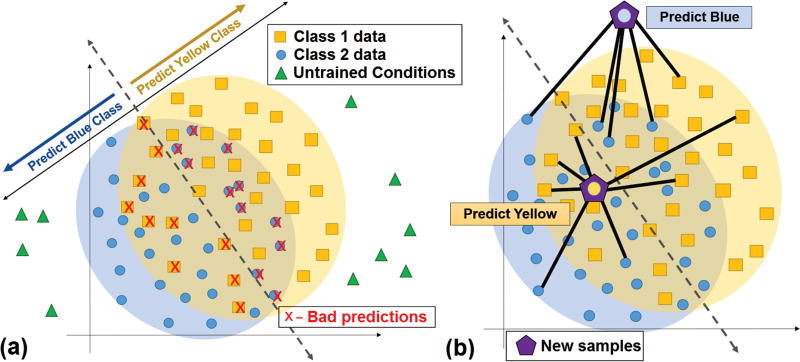Fig. 1.
Boundary-based classification and the need for more robust algorithms. (a) Real-world prosthesis use introduces untrained conditions which may not cluster in a separable way. Boundary classifiers cannot fully discriminate interspersed data. (b) In SRC methods, incoming test data are reconstructed from a minimal explanatory subset of the training data and the reconstruction is classified rather than the original input. SRC allows data from all classes to compete for membership in this subset at runtime, providing flexibility to classify interspersed data near class boundaries as well as outliers resulting from untrained effects.

